|
|
|
Privacy Policy | Join the Association | List of Members | Print this page |
|
|
What are they up to now??
|
|
|
Peter Holmes
Peter joined the RAAF in 1947 as an
Electrician, was sent to Laverton to do his rookies, then off to 1AD at
After a while at the mansion, he was posted to number 1 Transmitting (1TS) Station on Point Cook Road. Then from one end of the country to the other, he was attached to the 11 Mile Transceivers at Darwin. He spent 3 months in Darwin before the RAAF realised he was enjoying himself, so once again, he was posted back to Laverton, this time to ARDU in charge of Tarmac Radio Maintenance and the Pan Acclimatisation Work-shop.
His boss at ARDU was test pilot Derek “Jell” Cuming who, Peter says, could make a Lincoln perform like a Mustang – a bit scary as a passenger and it was Jell Cuming and Col Harvey who brought the first Canberra to ARDU in 1951. He also remembers working with ex-PM, John Gorton.
While there, he had various assorted attachments, then off to RMIT in 1950, but was discharged medically unfit in 1953 and shortly thereafter was married.
He joined the RAAF Association in
August of 1948, and has been an active member ever since. He was
After his 1953 discharge, he worked with the Mt Lyell Copper mine on Tasmania’s west coast as an electrician, however, his medical condition started to play up again, and he was not able to work in dust and fumes. This effectively kept him out of the mine so Mt Lyell ‘remustered’ him to a stores assistant in 1954. Over the next 4 years, he spent about 14 months in hospital, has had one lung removed and as he says, he advanced medical science by lending them his body for experimentation.
He left there in March 1961 and joined Utah Construction Company as their first Purchasing and Warehouse Manager. He travelled extensively with them, both within Australia and overseas and was involved in many large projects, including building an Aluminium Smelter, a Ferro Manganese Plant, copper and iron ore Mines in Tassie, and was involved in building the King St and West Gate bridges in Melbourne.
He transferred to Dillingham Construction and Engineering in 1968 as their Purchasing Manager which involved more travel, including trips to PNG where he was involved in building roads and the airport at the Bougainville copper mine. He left there and went to Kaiser Engineers, in Sept 1969, as their Technical Procurement Manager where he was involved in building the Aluminium Smelter at Tiwi Point in NZ.
He purchased his first computer in 1970 for The New Zealand Aluminium Smelter for $1.5 million which had to be purchased piece by piece from 5 different companies world wide as no one Company could provide the complete unit. He bought his first personal computer in 1995, complete with peripherals, for $5,069.00 and this machine was 4 times more sophisticated than the one he had bought 25 years prior.
|
|
|
|
|
|
Peter can’t remember if this was a rookies or radio course, but it was taken at Laverton in 1948. Peter is 3rd from the left in the back row.
After leaving Kaiser Engineering, he went back onto the "tools" and run his own Electrical/Electronic Contracting Company in Melbourne employing 7 men, specialising in heating, air-conditioning, lighting, refrigeration and TV sales, installation and repairs, plus Ultra-sonic Security Systems.
He says some of the lighting
installations included 5 and 6 foot fluoro tubes. These were high bay
mercury vapour lamps, which were the standard for street lighting at the
time. Peter tried to get correct disposal procedures for these
units because of their mercury and poisonous ioniser content. He remembers
an apprentice throwing a 6 footer as a spear, it shattered on impact and a
sliver of glass got imbedded in his hand. This grew to half footy size in
a day. He reflects that “30 plus years later he is still trying to
convince the mental morons of the dangers”.
He says:- “Many thousands of kgs of mercury are being dumped into land fill every year, infecting the water table and not a damn thing is being done about it. The policy of ‘shut up Australia at all costs and give to China’ is more important to the Pollies. Australia dumps many millions of tubes a year and people wonder why so many children have diseases once reserved for us oldies.”
In 1983 he retired and returned to Tassie and joined the local branch of the RAAF Association. He had 23 years as the President and Vice President of the NW Tasmania division.
For many years, Peter campaigned to have the Air Force Park built in Ulverstone and his tireless efforts were rewarded in November 1998 when the park was opened. The original plans for the park, drawn up by Peter, but not accepted by the Council as he didn’t have the required number of degrees, (they were subsequently re-submitted by suitably qualified people and accepted) included a barbeque building but this was not built back on 1998 due to insufficient funds. DVA promised $22,000 but provided only $13,000. Funds were recently raised through the generous support of the West Ulverstone Rotary and Ulverstone Lions Clubs and the Council helped by taking on board some of DVA’s broken promises.
The prop, which is an old C130A prop, had to be raised one metre from its original position as the local lads were swinging on it. Peter has been a DVA accredited Pensions and Welfare Officer for 55 years this month, and he reckons it’s probably about time he retired and got stuck into his collection of good ports. He’s got 8 kids, 20 grand children and 10 great grand children.
|
|
Peter Nelms.
It was a night flight and, after they had been flying around for a while, they landed and put him out with a little flashing torch. After taking off again and circling they came back and lowering the winch for him. Once he was in the harness they took off with him dangling like a big teabag. It was a pitch black night and he thought any minute he would be wrapped around a tree! Later, after he became familiar with the area, he found out that they were at the DZ at Saltash and there were no trees.
Another memorable experience was on a rescue mission to recover a Vampire that had gone U/S at Sale. They had a Caribou to take the recovery team from Williamtown but they had to call into Richmond on the way to pick up some parts they needed for the mission. When they got there, Richmond was totalling fogged in and they had to do a GCA approach. It was interesting to have a headset on and listen to the pilot being talked down whilst looking out the window and being able to see nothing all the way to touch-down.
Peter also had a couple of Army Coop
exercises to Townsville with the Sabres, which were good fun, and an
attachment to Sale for a Macchi course. 2OCU had become too big with six
different aircraft types (Vampires,
Sabres, Macchis, Winjeels, Mirages and Iroquois) so they formed 5 OTU with the Sabres, Vampires and Macchis and 4 FLT got the Winjeels and Iroquois. He was posted to 5 OTU for the full period of its existence. Stinkie Stenhouse was the CO. It was while he was seconded down to Cyrano section, on the APG-56 bench, that he got his CPLs. He tried to get across onto Mirages, with the intention of a posting to Butterworth, but because Sabres were on their way out he was classified as essential personnel and had to stay with the Swords.
In the days before refund of R&Q,he moved off base into an old overgrown house at Mayfield (under the BHP chimneys) with a group of other single RadTechs – Greg Bruce from 5 OTU, Bob Kochevatkin from Cyrano and Russ Anderson from Base Radio. The nurses’ quarters at the Mater hospital nearby proved to be a ready source of girls for parties at the house and there were quite a few marriages between RAAFies and nurses as a result. In fact, Peter was the only one from the house who didn’t marry a nurse when he chose a Newcastle girl, Sue.
After the disposal of the Sabres he finally got to Mirages and, in early 1973 as a corporal, he was
posted to
It was here that Peter worked with Phil Holden, Ted McEvoy, Spook Villiers, Tex Reinke, Slim Hurrell, and Ken Morris.
The RAAF also maintained a permanent presence with a number of aircraft in Singapore and the two squadrons, 3 and 75, had to take it in turns to go down there, for six weeks at a time, to operate them. The wives stayed back at Penang and the blokes had to live in at Tengah (below) which was at that stage an RAF base.
They had a great life in Malaysia with a housemaid and lots of sporting activities and a good social life. They had a daughter, Natalie, born at Butterworth (in the RAAF hospital) and she was six months old when Peter was posted back to Williamtown at the end of 1975. He worked for a while in COMNAV and on the RAAF crash boats, which operated out of Newcastle harbour, and was then promoted to Sergeant and transferred to the guided missile (Matra) workshop. Reg Owen and Brian King were the WOFFs in 481 at the time.
In 1980 he was posted back to the School of Radio; this time as an instructor. After a couple of years there he was commissioned as a radio officer. After OTS he was posted to SUPCOM where he spent another couple of years before being posted to 2AD at Richmond. Here he was in charge of the radio, electrical, instrument and armament sections and had about 130 people working for him. While there the family were lucky enough to get a trip to California for a fortnight in an RAAF B707; with 4 days stop-over in Hawaii. He was next posted to HQ OPCOM at Glenbrook. In this job he travelled all over Australia doing the OPCOM staff visits. He also got back to Malaysia for a short visit in 1988.
He was posted to Air Force Headquarters in Canberra in 1989 and, once again in this job, did a fair bit of travelling. In late 1989 he had a trip to USA where he flew into LA and then spent 3 weeks working his way across the country to New York; mainly visiting Defence contractors. He then spent a couple of days at the Australian embassy in Washington DC before heading home with a stop-over in Hawaii. In 1990 he was promoted to squadron leader and the following year had a working visit to New Zealand. He flew Qantas to Wellington and back from Auckland in a RAAF HS748 via Norfolk Island. In April 1992, after 25 years in the RAAF, he resigned and joined the Public Service (with the Defence Department in Canberra) where he still works today. He spent another 10 years in the RAAF Reserve Staff Group and, in this capacity, worked on the P3C ESM project.
Both daughters went to university in Canberra, whilst living at home with mum and dad. One daughter is now a chartered accountant and the other a high school teacher. Both daughters are now married and living in Canberra and Peter is the proud grandfather to three lovely girls.
Some of his life experiences
have included visiting about 19 different countries and every state of
Australia, being winched from a helicopter, attending the
Ourimbah rock festival (Australia’s equivalent
of Woodstock - below), being a prime witness in an armed hold-up and
police shootout, being the parade
|
|
|
Q. Why is divorce so expensive? A. Because it's worth it.
Q. What did the blonde say when she found out she was pregnant? A. Are you sure it's mine?'
|
|
|
Back Go to page: 1 2 3 4 5 6 7 8 9 10 11 12 13 14 15 16 17 18 Forward |
 Laverton
where he worked as the Barracks Electrician. Eventually, he was posted to
Wagga as an Electrician Instructor, but after a while, heard about the
‘new’ radio game, so he remustered and was sent to Air and Ground Radio
School in December, 1948. After completing his Radio Servicing (Air)
course, he was posted to 1 Squadron, but was sent on attachment to
Frognall as a temporary shift mechanic. (Photo at left is Peter, taken at
Laverton in 1948).
Laverton
where he worked as the Barracks Electrician. Eventually, he was posted to
Wagga as an Electrician Instructor, but after a while, heard about the
‘new’ radio game, so he remustered and was sent to Air and Ground Radio
School in December, 1948. After completing his Radio Servicing (Air)
course, he was posted to 1 Squadron, but was sent on attachment to
Frognall as a temporary shift mechanic. (Photo at left is Peter, taken at
Laverton in 1948).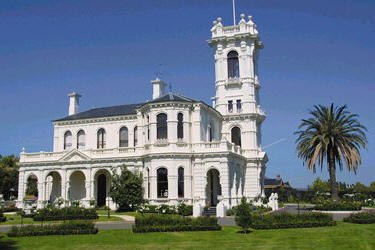
 awarded
a R.A.A.F. Association National Council Life Membership in 2002. Photo at
left is Peter giving his thank you speech at
awarded
a R.A.A.F. Association National Council Life Membership in 2002. Photo at
left is Peter giving his thank you speech at
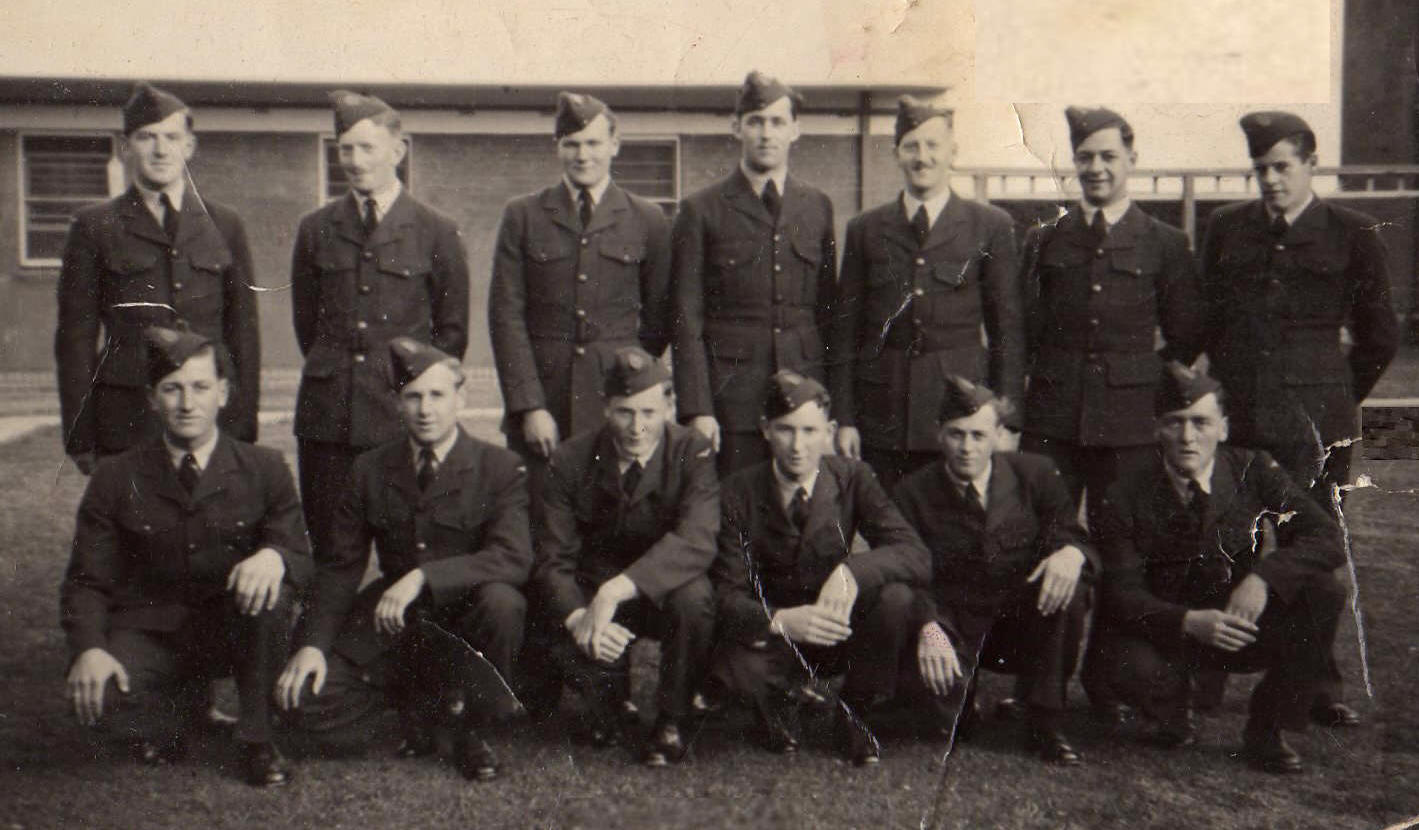
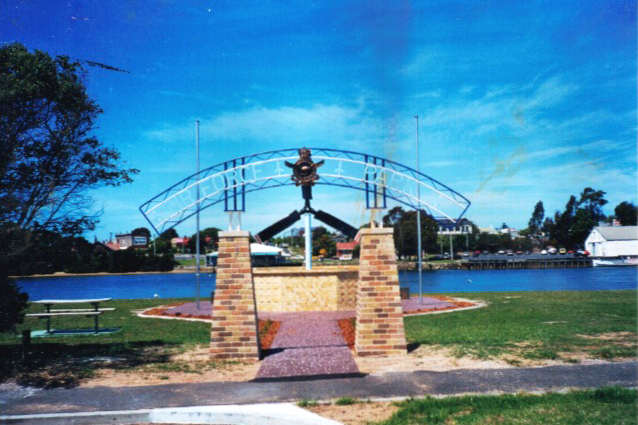
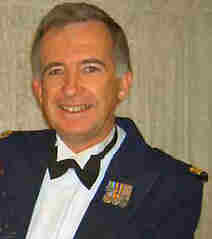 After
completing primary school on Thursday Island and high school in Cairns,
Peter joined the RAAF in Feb 1967. He graduated from
After
completing primary school on Thursday Island and high school in Cairns,
Peter joined the RAAF in Feb 1967. He graduated from
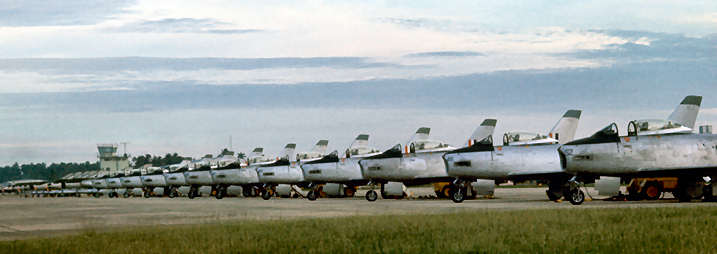
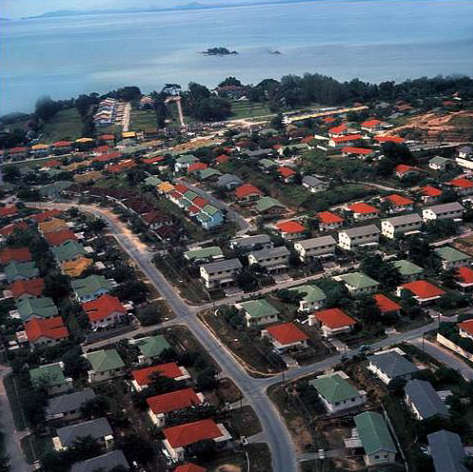 75 Sqn at Butterworth. After six weeks living in the Hostie they
were allocated a house on Penang Island, Hillside (right) to live in and
he
had to go across to the mainland each day, on the ferry, to get to work.
75 Sqn at Butterworth. After six weeks living in the Hostie they
were allocated a house on Penang Island, Hillside (right) to live in and
he
had to go across to the mainland each day, on the ferry, to get to work.
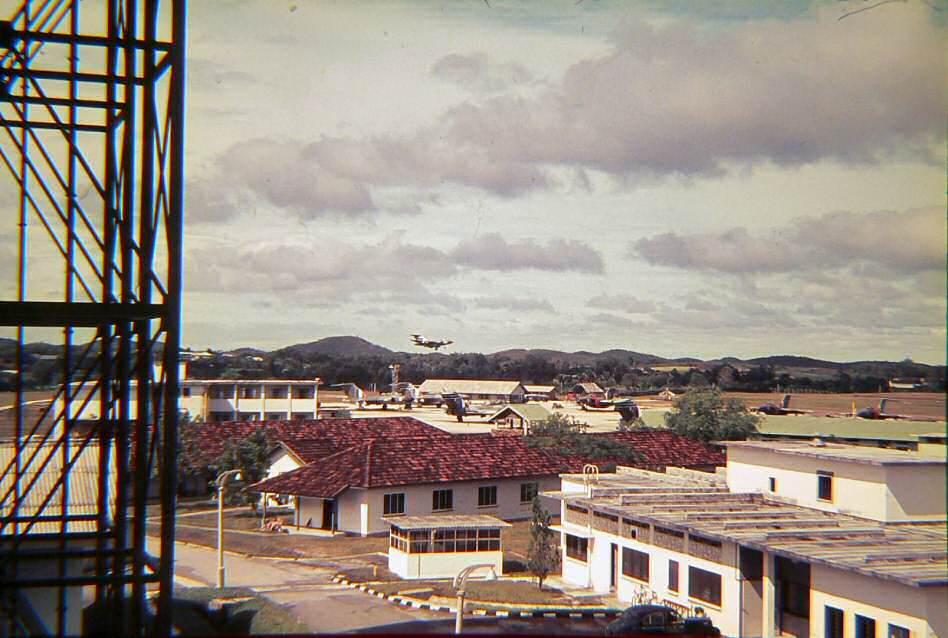 Peter
was on the tarmac one day to see Geoff Shepherd, the recently retired
Chief of the Air Force, and Poddle Wood bang out of a dual Mirage behind 2
OCU HQ. Towards the end of 1977 Peter was posted back to 75 Sqn and once
again lived on Penang; and did the trips to Singapore. In 1978 they had
another daughter, Rebecca; born there (must have been something in the
air).
Peter
was on the tarmac one day to see Geoff Shepherd, the recently retired
Chief of the Air Force, and Poddle Wood bang out of a dual Mirage behind 2
OCU HQ. Towards the end of 1977 Peter was posted back to 75 Sqn and once
again lived on Penang; and did the trips to Singapore. In 1978 they had
another daughter, Rebecca; born there (must have been something in the
air).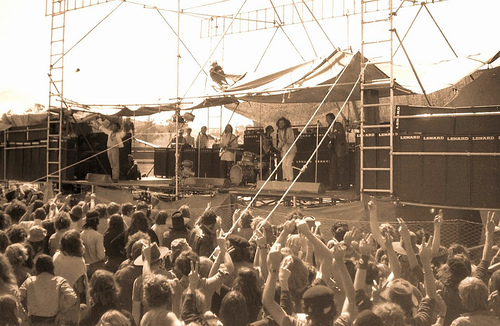 marshal
for Victory in the Pacific parade at Martin Place in Sydney,
marshal
for Victory in the Pacific parade at Martin Place in Sydney,